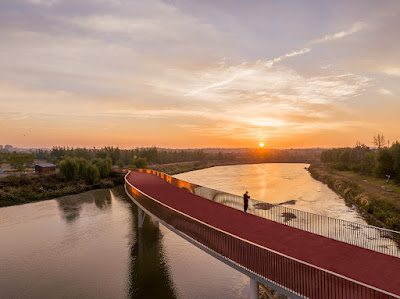Copyright Rex Zou
The balustrades are a specific feature using parametric design. It has been developed as a vibrant artistic surface to provide quality within the public space. The bespoke Grasshopper definition enabled a visual and differentiated effect. It is designed to be visually abstract using a moiré definition, which underlines the curved concept and plays with the natural light. The railing reads at different speeds, whether it is perceived by pedestrians, cyclists, or light VIP vehicles, and creates an ever-changing feel.
Two grids shift parametrically while keeping the code requirement of a minimum of 110 mm between elements for safety. Sterling Presser used Rhino geometry definition of the whole project to deliver a 3D coordinated construction information package for the local contractor.








